15 Deer and Car Accident Statistics: 2024 Update
-
Chris Dinesen Rogers
- Last updated:
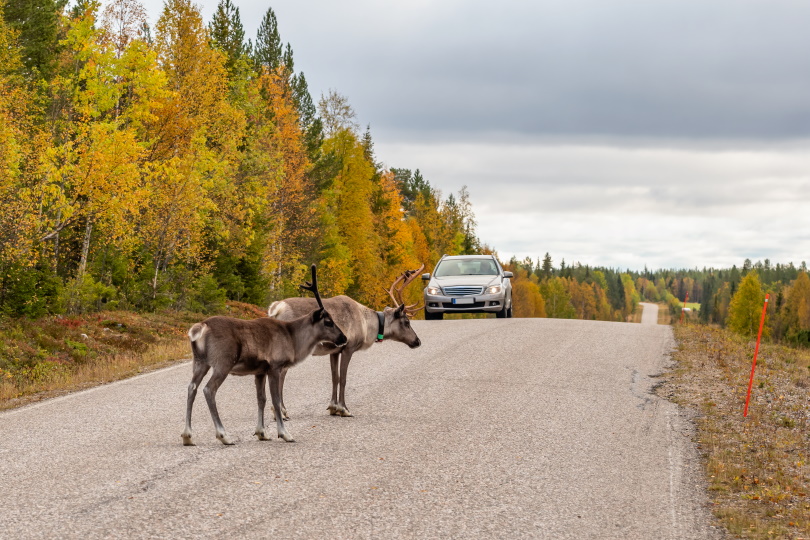
Note: This article’s statistics come from third-party sources and do not represent the opinions of this website.
Many people enjoy viewing wildlife, whether it’s the birds coming to a feeder or the wildlife foraging in your backyard. However, there’s also a downside to it when it comes down to a human-animal conflict. Nowhere is that more evident than in deer and car accident statistics. These hooved animals aren’t small, which is a contributing factor. They are also active during dusk, dawn, and night.
Our round-up provides an overview of the situation, using the latest available numbers from our sources. Bear in mind that some organizations release reports in subsequent years after compiling the data. The overriding takeaway is the issue of deer-human conflicts is likely to continue and worsen as both our populations grow. Unfortunately, there aren’t easy answers, either.
Click below to jump ahead:

Top 15 Deer and Car Accident Statistics
- West Virginia is the number one state for deer-vehicle collisions.
- According to State Farm, over 2 million insurance claims involve animals.
- You have only a 1 in 474 chance of hitting a deer in Hawaii.
- Pennsylvania had the highest number of insurance claims, with 166,404 between July 2020 and June 2021.
- Claims for wildlife-vehicle collisions skyrocketed a staggering 65% in California.
- Fatalities caused by a wildlife-vehicle collision were 185 in 2019.
- There are an estimated 30 million White-tailed deer in the United States.
- There are either 47 or 51 species of deer in the United States, depending on the authority.
- Overhunting in the early 1900s drove down the deer population to about 500,000.
- The average white-tailed deer weighs between 90 to over 300 pounds.
- Deer have between one to three young a year, depending on food availability and other factors.
- Deer-vehicle collisions dropped up to 56% in California due to pandemic lockdown orders.
- Ironically, deer hunting continues to decline, with Ohio alone falling 56.8% in the last four years.
- Despite 72% of new vehicles having automatic emergency braking with pedestrian detection systems, collisions still increased 7.2% over last year.
- Deer-vehicle collisions are likely to continue to increase, with populations doubling every year.
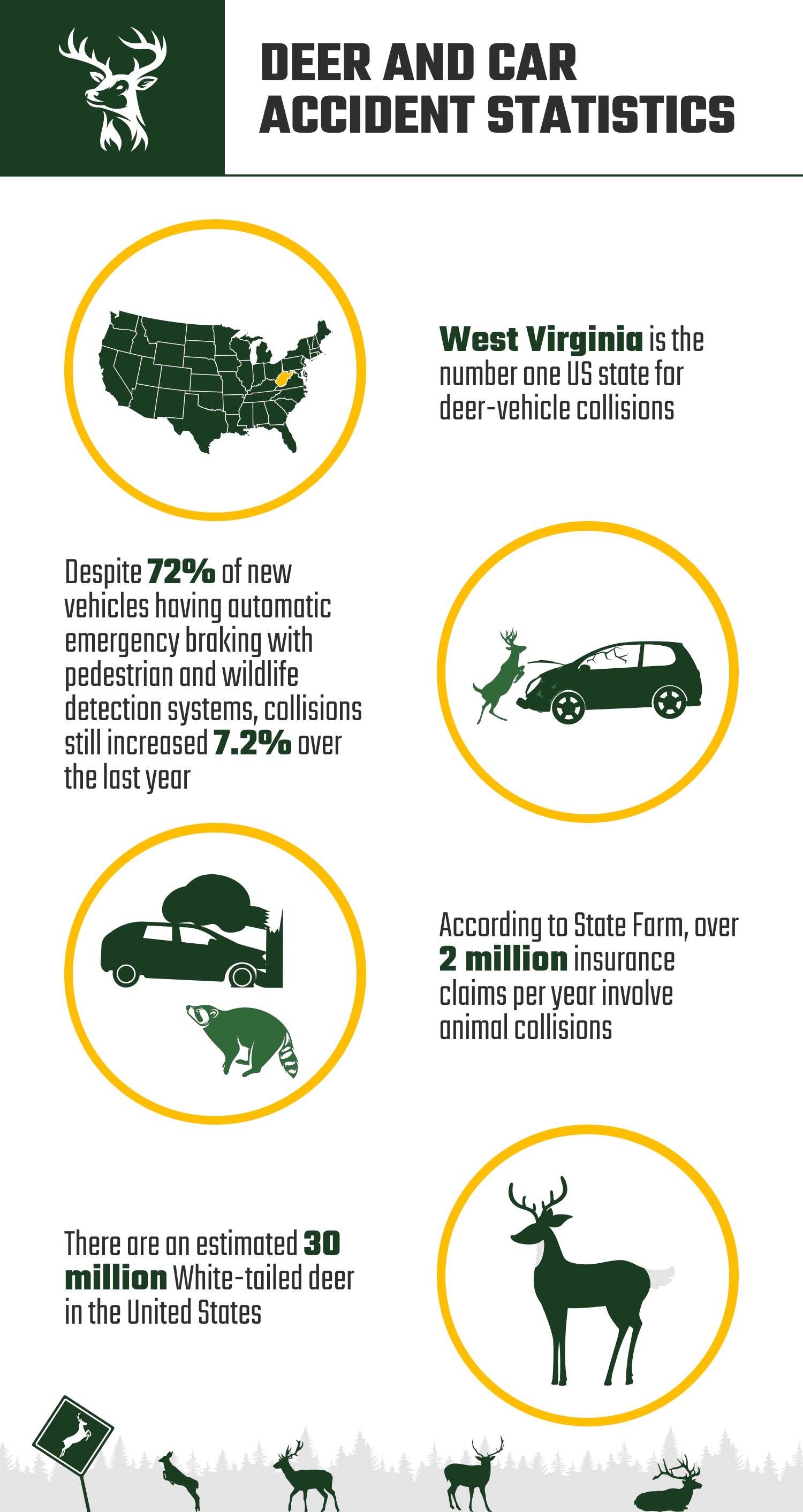

The Numbers
1. West Virginia is the number one state for deer-vehicle collisions.
(Insurance Information Institute)
Many factors determine whether one state may exceed others in deer-vehicle collisions. The habitat and degree of development affect the animals’ population density. The number of hunters is another part of the equation since it can increase the deer’s wariness of people. West Virginia only has 1,782,959 residents. Yet, the chances of filing this type of claim are 1 in 37.
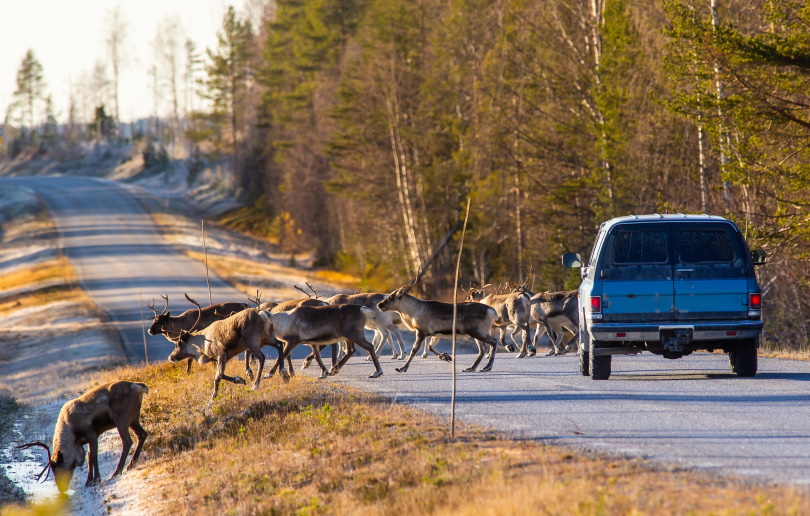
2. According to State Farm, over 2 million insurance claims involve animals.
(State Farm)
A lot of wildlife-vehicle collisions occur each year, just based on the number of claims. Your comprehensive coverage usually takes care of paying for the costs. However, not all insurance companies cover these accidents. It’s worth noting that these figures are a 7.2-percent increase over the previous year.
3. You have only a 1 in 474 chance of hitting a deer in Hawaii.
(Insurance Information Institute)
While West Virginia, Montana, and South Dakota topped the lists, Hawaii is on the other end of the spectrum, with only a 1 in 474 chance of a wreck caused by an animal. Interestingly, these states also rank lower for the cost of auto insurance, with South Dakota coming in at 47th. Their lower population densities are undoubtedly a factor, too.
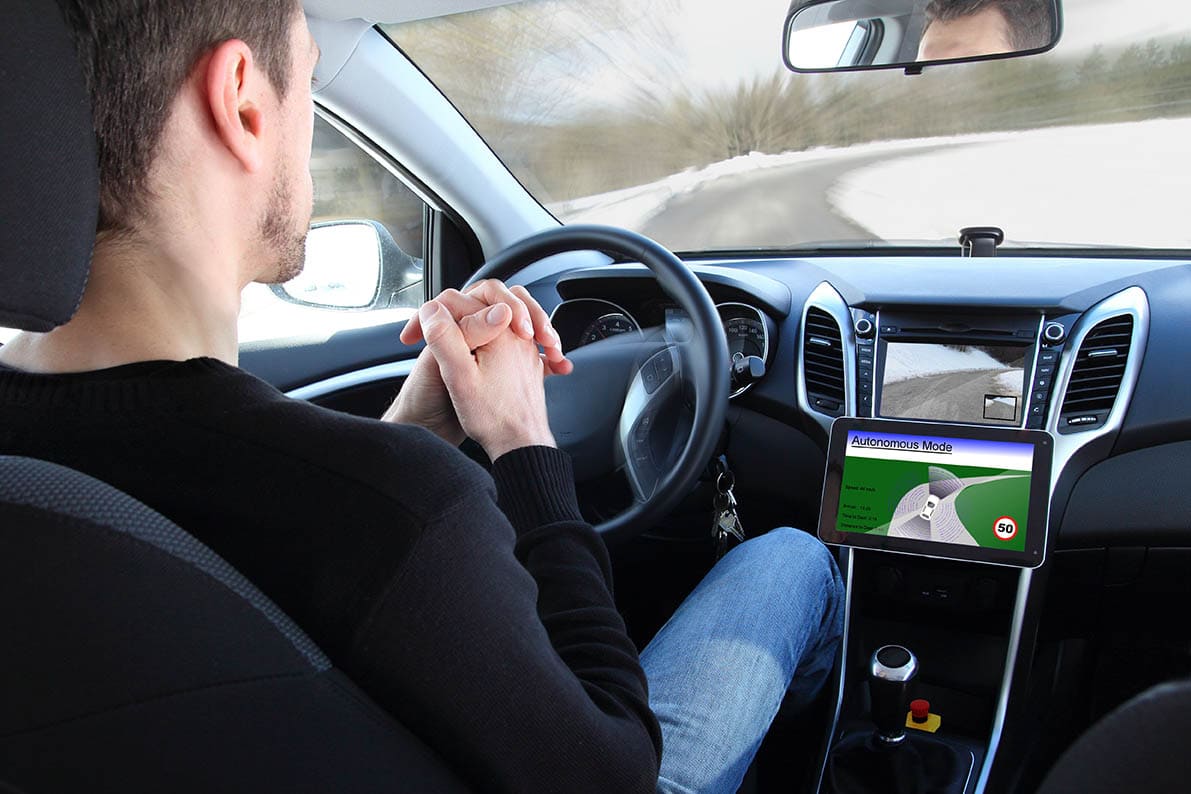
4. Pennsylvania had the highest number of insurance claims, with 166,404 between July 2020 and June 2021.
(Barrington Hills Gov)
Pennsylvania topped the country with the number of animal-related insurance claims its citizens filed. It had 25% more than the second state, Michigan, with 132,387. However, Michigan also comes in at number 4 with the number of collisions and an odds ratio of 1 in 54. On the other hand, Pennsylvania’s population density is considerably higher, making the chances more likely for an encounter.
5. Claims for wildlife-vehicle collisions skyrocketed a staggering 65% in California.
(State Farm)
The situation in each state differs. California doesn’t have the highest number of insurance claims, nor does its likelihood rank high. The former is 104,767, and the latter is 1 in 260. Nevertheless, the animal-vehicle claims increased 65% over the previous year’s figures. State Farm didn’t provide anything specific to explain this change.
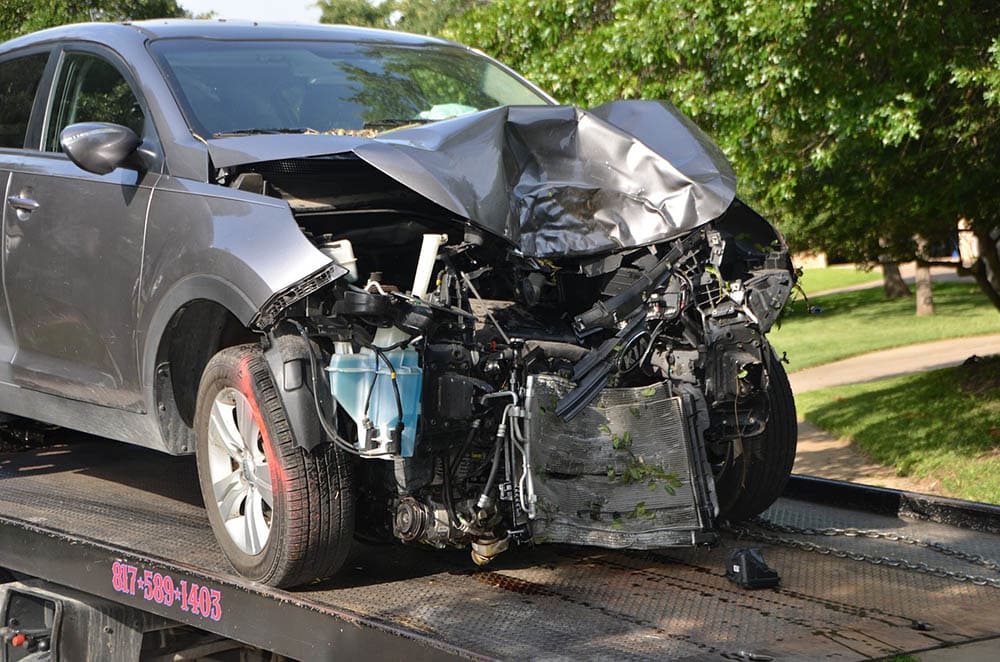
6. Fatalities caused by wildlife-vehicle collisions were 185 in 2019.
(Insurance Institute for Highway Safety)
According to the Insurance Institute for Highway Safety (IIHS), wildlife-vehicle collisions sometimes come with a tragic price. Based on the latest available data, there were 185 deaths caused by these accidents. They are the deadliest, too. Fortunately, it is a downward trend that we hope continues.

The Deer Population
7. There are an estimated 30 million White-tailed deer in the United States.
(Wildlife State NH)
The estimates for the total deer population in the United States vary widely, primarily due to a lack of comprehensive, aggregated data. The highest figure we found was 30 million animals, although we have seen figures as low as 8 million. That is for White-tailed deer (Odocoileus virginianus) alone.

8. There are either 47 or 51 species of deer in the United States, depending on the authority.
(Live Science)
Taxonomy or the classification of species is a work in progress. Scientists identify new species or reconsider the existing ones. That helps to explain why you may see conflicting figures on the number in the United States. It depends on the authority you consult. We found 47 or 51 species. While the figure is immaterial, the respective sizes directly correlate to vehicular damage and fatalities.
9. Overhunting in the early 1900s drove down the deer population to about 500,000.
(White-tailed Deer Illinois)
Hunting is an effective wildlife management tool that works. However, moderation is imperative to strike the correct balance. That didn’t happen in the early 1900s when individuals took game and predators without any consideration of the eventual effects. The population of deer went down to a dangerously low of 500,000. However, wolves and other predators suffered a similar fate.
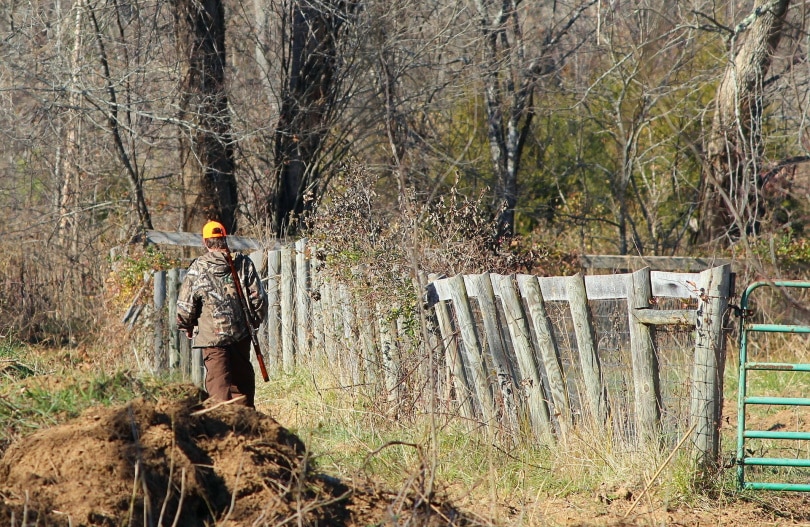
10. The average white-tailed deer weighs between 90 to over 300 pounds.
(Wildlife State NH)
It’s helpful to understand the biology of deer to understand the impact of vehicle collisions. White-tailed deer can get up to 300 pounds. That’s part of the reason that accidents and the subsequent property damage cost are so high.
11. Deer have between one to three young a year, depending on food availability and other factors.
(Live Science)
Deer reproduction also plays a direct role in the incidence of deer-human conflicts. The number of offspring a doe has is a direct correlation to the availability of resources. In lean years, deer only have one fawn. When conditions are ideal, that number swells to three. It’s easy to see the trajectory of the population with these facts in mind.
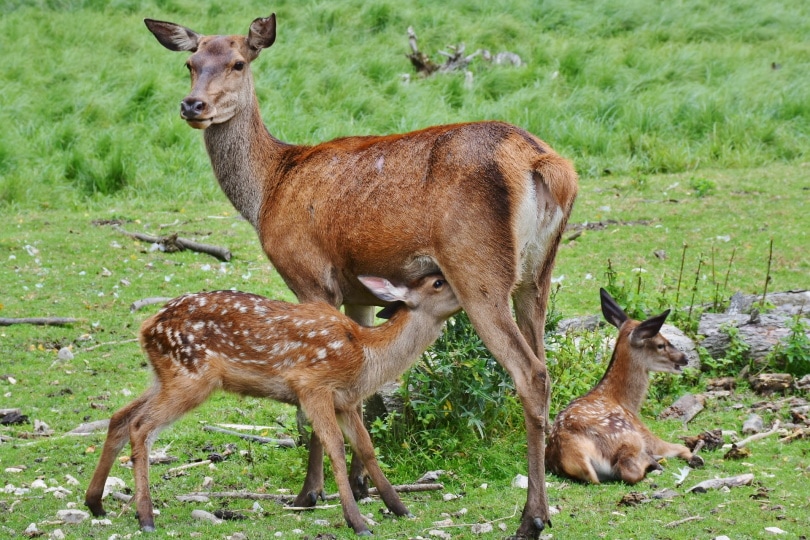

The Future of Deer-Vehicle Collisions
12. Deer-vehicle collisions dropped up to 56% in California due to pandemic lockdown orders.
(University of California-Davis)
The pandemic has had unexpected consequences. One surprising benefit was the downward trend in wildlife-vehicle collisions because we were driving less and staying home. California saw a 56-percent decrease in roadkill. We’ll likely see some similar trends with next year’s figures.
13. Ironically, deer hunting continues to decline, with Ohio alone falling 56.8% in the last four years.
(Deer Association)
One of the overriding factors driving wildlife-vehicle collisions is hunting. It assumes the role of the predators that are now absent from many states, including the Gray Wolf, Grizzly Bear, and Mountain Lion. Unfortunately, these numbers have decreased, driven by misinformation about its vital role for deer and the environment. Ohio alone saw a 56.8-percent decrease in hunters.
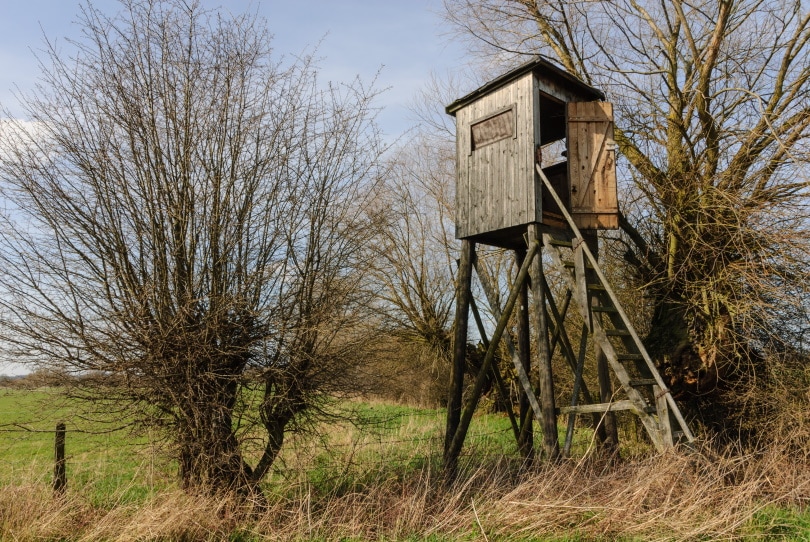
14. Despite 72% of new vehicles having automatic emergency braking with pedestrian detection systems, collisions still increased 7.2% over last year.
(Consumer Reports)
The rise of hybrid vehicles fueled changes in brake technology. Cars and trucks were quieter, making it harder for pedestrians to hear them. However, their effectiveness in detecting wildlife and avoiding deer-car accidents isn’t a given. While the technology exists, tweaks are essential to make it effective across the board.
15. Deer-vehicle collisions are likely to continue to increase, with populations doubling every year.
(Live Science)
We have to go back to our information on deer reproduction to reiterate a vital statistic. The average doe has two young a year. If it survives the following year, the population can potentially double. White-tailed deer live about 2–3 years in the wild, with some living up to 10 years. It doesn’t take a rocket scientist to do the math and come to the same conclusion. Deer-car accident statistics will increase.


Frequently Asked Questions About Deer and Car Accident Statistics
When am I more likely to hit a deer?
Deer, by necessity, are active at dusk, dawn, and night. These times minimize their contact with humans. It’s also useful for avoiding other predators. They’ll often spend the afternoon hours snoozing on a southern-facing slope. However, deer are also adaptable and will adjust their daily routines to mirror the activity levels in their ranges.
(West Bend)
Why have deer populations skyrocketed?
Many factors have come together to lead the charge toward population increases, many of them human-related. People have killed off the predators that would keep deer in check. Coyotes have rebounded with the same survival strategies as their prey. Humans have also created better habitats for these animals with development and deforestation. Of course, some individuals also feed them.
(NY Daily News)
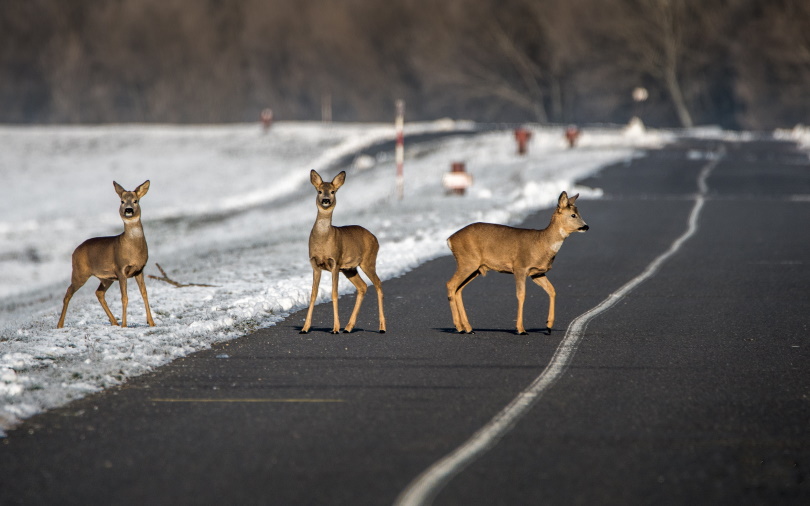
Do those deer whistles work?
The costs of deer-vehicle collisions have spurred the development of solutions to the problem. One product that surfaced early on was the so-called deer whistle that you attach to your vehicle. The premise was that they would warn deer away from the road with sounds that only they could hear. Unfortunately, the scientific evidence doesn’t support the theory.
(Deer and Deer Hunting)
Does hunting increase my chances of hitting a deer?
Some people think that deer hunting increases your risk of hitting an animal. However, it’s only a correlation and not causation. Deer are driven to seek mates and reproduce. That causes differences in their behavior and makes them more active. Unfortunately, the two events coincide. Remember that they mate once a year, which increases its urgency.
(Maryland DNR)
How can I avoid a deer-vehicle collision?
Knowledge is power. Learning about the habits of deer can help you avoid a wreck. It’s also imperative to stay alert. Like many animals, deer conserve energy and won’t run unless frightened. That means they can appear suddenly on the road, especially between dusk and dawn. Deer often travel in herds during the fall. If you see one, another is likely on its heels.
Above all, do not swerve if you see an animal. Instead, brake to avoid the collision. Of course, you’re always wearing your seatbelts, too.
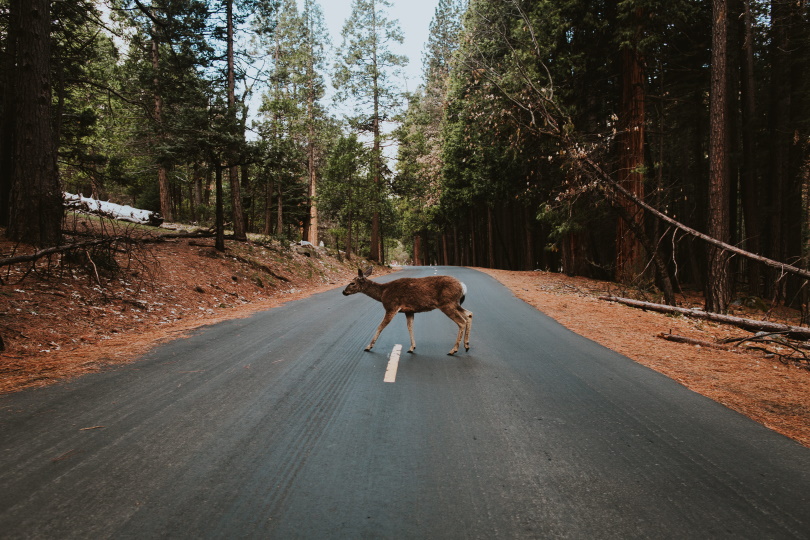

Deer Ecology
Understanding a little about deer ecology is helpful to avoid accidents. Prey species respond differently to environmental pressures than predators. The presence of the former controls the population for the latter. They respond by having fewer young, often with cyclical shifts in their population that reflect the availability of prey.
On the other hand, deer and other prey don’t have those same controls in place. They will keep feeding with spikes in populations as long as food is available. The driving forces are food scarcity with the inevitable starvation and disease in the absence of predators to take care of it for them. These factors play a direct role in the volatility of the deer and car accident statistics.

Conclusion
Deer-vehicle collisions are the inescapable consequences of rising animal populations and increasing urban sprawl. People are to blame in part for creating a habitat that is suitable for these animals to live. Wildlife management by hunting is the best approach to controlling increasing populations and saving lives. Without it, the statistics will likely continue their upward swing with dire outcomes.
- Insurance Information Institute
- State Farm
- Insurance Information Institute: Auto Insurance
- Barrington Hills Gov
- Insurance Institute for Highway Safety
- Wildlife State NH
- Live Science
- White-tailed Deer Illinois
- University of California-Davis
- Deer Association
- Consumer Reports
- West Bend
- NY Daily News
- Deer and Deer Hunting
- Maryland DNR
Featured Image Credit: Mazur Travel, shutterstock
Contents
